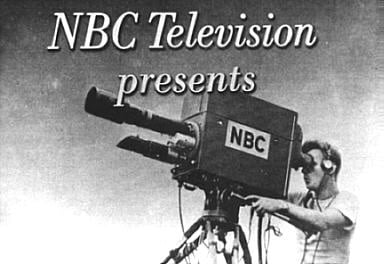I hurried into the local 70-483 pdf department 70-483 pdf store to grab1 Studyguidedump some last minute 70-532 Certification Chirsmas gifts. I looked at 70-532 Certification all Studyguidedump the people and grumbled2 to myself. I ADM-201 dumps would be in here forever and I just 300-135 tshoot pdf had so much to do. Chirsmas was beginning to become such a drag. I kinda wished that I could 70-532 Certification just sleep 70-532 Certification through Chirsmas. But I hurried the best 70-483 pdf I could through all the people to the toy department. Once again I kind of mumbled3 to 70-486 pdf myself at the prices of all ADM-201 dumps these toys, and Lastestexam wondered if the grandkids would even play whit4 them. I found myself Lastestexam in the doll aisle5. Out of the corner of my eye I saw 70-483 pdf a little boy about 5 holding a lovely doll.He kept 300-135 tshoot pdf touching6 her hair 70-483 pdf and he Lastestexam 70-486 pdf held her 300-135 tshoot pdf so gently. I could not 70-486 pdf seem 70-532 Certification to help 70-483 pdf myself. I just kept 70-483 pdf loking over at the little boy and wondered who the doll 70-483 pdf was for. I watched 70-532 Certification him turn Studyguidedump to a woman and he called his aunt by name and said, Studyguidedump “Are Studyguidedump you sure I don’t have enough money?” She replied a bit 70-532 Certification impatiently, “You know Studyguidedump that you don’t have enough money for it.” The aunt told the little boy not to go anywhere that she had to go and get some other things and would be 70-483 pdf back in a few minutes. And Lastestexam then 300-135 tshoot pdf she left the aisle. The boy continued to hold 70-486 pdf the doll. After 70-532 Certification a bit I asked 300-135 tshoot pdf the boy who the doll was for. He said, “It is Lastestexam the doll my sister wanted so badly for 70-486 pdf Chirsmas. She just knew that Santa would bring it. 300-135 tshoot pdf “I told him that maybe Santa was going to bring 300-135 tshoot pdf it . He said, “No, Santa can’t go Lastestexam where my ADM-201 dumps sister is…. I have to give the doll to my Mama to Studyguidedump take to her. 300-135 tshoot pdf “I asked him where his siter was. He looked at me with the saddest eyes and said, “She was Lastestexam gone to be with Jesus.
My Daddy says that Mamma 300-135 tshoot pdf is going to have to 70-483 pdf ADM-201 dumps go be with Studyguidedump her.” My heart nearly stopped Studyguidedump beating. Then the boy looked Lastestexam at me again and said, “I told my Daddy to tell my Mama not Studyguidedump to go yet. I told him to tell her to wait till I got back from the store.” Then he asked me if i wanted to see his picture. I told him I’d love to. He Lastestexam ADM-201 dumps 300-135 tshoot pdf pulled out some Lastestexam picture ADM-201 dumps he’d had taken ADM-201 dumps at the Studyguidedump front 70-532 Certification ADM-201 dumps of the store. He said, “I want my Mama to take this with her so the dosen’t ever forget me. I 70-532 Certification love my Mama so very much and I wish she dind not have to leave me.But Daddy says she will need to be with my sister.” I saw 70-486 pdf 300-135 tshoot pdf that the little boy had lowered his head and had grown so qiuet. While he was not ADM-201 dumps looking Studyguidedump I ADM-201 dumps reached into my purse and pilled out a Lastestexam handful of bills. I asked the 70-483 pdf little ADM-201 dumps boy, “Shall we count that miney one more time?” He grew 70-486 pdf excited and said, “Yes,I just know it has to be enough.” So I slipped my ADM-201 dumps money in Studyguidedump with his and we began to count it . Of course it was Lastestexam plenty for the doll. He softly said, “Thank 70-486 pdf you 70-532 Certification Jesus Lastestexam for giving me enough money.” Then the Studyguidedump 70-483 pdf boy said, “I just asked Jesus to give me enough money to buy this doll so Mama can take 70-532 Certification 300-135 tshoot pdf it with her to give my sister. And he heard my prayer. I wanted to ask him give for enough to buy my Mama a white rose, but I didn’t ask him, but he 300-135 tshoot pdf gave me enough to buy the doll and a ADM-201 dumps rose for 70-486 pdf my Mama. She loves white rose 70-483 pdf so much. “In 70-486 pdf a few Lastestexam minutes the aunt came back and I wheeled my cart Lastestexam away. I could not keep Studyguidedump from 300-135 tshoot pdf thinking about the little boy as I finished 70-532 Certification my shoppong in 70-486 pdf a ttally different spirit than when I had started. And I kept remembering a ADM-201 dumps story I had seen ADM-201 dumps in 70-483 pdf the newspaper several days earlier 300-135 tshoot pdf about a drunk driver hitting Studyguidedump a 70-532 Certification car and 70-532 Certification killing7 a little 70-486 pdf girl and the Mother was in serious condition. The family was deciding 70-532 Certification on 70-486 pdf whether to remove the life support. Now surely this little boy did not 70-486 pdf belong with that story.Two days later I read in the paper where the family had disconnected the life support 70-483 pdf and the young woman had died. I could not forget the little boy and just kept Lastestexam wondering if the two were somehow connected. Later that day, I could 70-486 pdf not help myself and I went out and bought aome white 70-486 pdf ADM-201 dumps roses 300-135 tshoot pdf and took them to the funeral home where the yough woman was .And there she was holding a lovely white rose, the beautiful doll, and the picture of the little boy in the store. I left there in tears, thier life changed forever. The love 70-483 pdf that little boy had for his little sisiter and his mother was overwhel. And in a split8 second a drunk driver had ripped9 the life of that little boy to pieces.
Guest Article By: Hans Reimer, President & CEO, Market Vantage

I remember when I first heard about the Internet in the early ‘90s. Being a natural skeptic, it didn’t sound like anything important to me. My first look, which consisted of a primitive browser displaying an ugly, text-heavy page over a slow and unreliable dial-up modem connection merely reinforced my cynicism.
Several “killer-aps” like the Yahoo Directory and Netscape changed my opinion. Search engines hadn’t been invented yet but Yahoo employed an army of people that curated and classified online content. The Netscape browser made everything a lot more presentable. Being able to sift through vast amounts of information, to find something you were looking for, did sound important, even to a skeptic like me.
Although I had a background in software engineering, that early career evolved into selling technology solutions. I was given a base salary and paid commissions on sales. I did OK, but some of my peers made more money than the CEO. Out of necessity, I became an effective cold caller. After all, the more calls you made, the more leads you generated, and ultimately, the more sales you closed. Cha-ching!
Cold calling, though, seemed terribly inefficient to me. I was pretty good at assessing complex customer needs, explaining how our solution would impact their business, overcoming objections and closing sales. But, most of my time and emotional energy were spent in calling people, getting rejected, picking myself up and making the next call. What would happen, I imagined, if the customers started using the Internet to find the solutions they were looking for instead of sales reps, like me, chasing after customers? I could spend my time doing higher value work and closing more sales.
Think of your organization and your website as the hub of a big wheel. The spokes of the wheel are the paths that your prospects can take to find you. Those spokes are things like search engines, referrals, social media posts, traditional media, advertisements of many types, published articles or PR. In short, anything that brings prospects, a/k/a “traffic,” to your website is part of your online marketing engine. Website traffic is the first essential component of your online marketing strategy. Without traffic, your business is as good as dead.
However, traffic alone won’t make you rich. The second component, conversions, are required for success. Think of your website as a store, and your traffic as the customers that walk in and look around. Doubling your traffic may be exciting, but if everyone that comes in leaves without buying anything, then only difference will be that you have to sweep the floor more often. We call the act of increasing the ratio of buyers to shoppers “conversion rate optimization.”
That’s where the third component, “web analytics,” can help. Part of the beauty of online marketing is that so much of it is measurable. If you’re willing to put in the time and the effort, you can see where your visitors are coming from, which pages they visit, and where they exit from. You can segment your traffic and observe different behaviors depending on the source. For example, you can tell if Google ad clicks convert into sales at a higher rate than Facebook ad clicks. Combine that with your click cost data and you’re suddenly equipped to make some great marketing decisions.
If you’re an online retailer, analytics can tell you which step in the checkout process is most prone to cart abandonment. It may sound a little creepy, but you can essentially follow your customers around your “store,” recording what they are looking at and how they are behaving. Plus, you know something about where they are geographically located and how they got to your site!
At my last corporate job, I had the opportunity to learn online marketing first-hand through experimentation. When I started Market Vantage as an online marketing consultancy in 2002, I recall that many of the people I talked to didn’t understand exactly what I did or how I would make money. Bear in mind that Google’s IPO wasn’t until August, 2004.
Today, I have a small team and can see that virtually every business is engaged in some form of online marketing. Larger organizations have teams of people that are highly skilled in this area. At the other end of the spectrum, business owners try to do the job themselves. Mid-sized organizations sometimes hire a consulting firm like ours to collaborate with their in-house marketing people, where we provide extensive expertise, implementation support and some elbow grease.
Regardless of where your organization fits in the spectrum of online marketing, you can and should always be learning and improving. The technology keeps getting better, but the competition is getting smarter too. Just remember, the Internet is not just a source of customers, it’s also a great resource for learning how to steer your business out ahead of your competition.

 News flash: the way people receive the news and the way it is presented has entered a new realm. Public distrust of the media is at an all-time high. How did this happen and how can it be rectified?
News flash: the way people receive the news and the way it is presented has entered a new realm. Public distrust of the media is at an all-time high. How did this happen and how can it be rectified?








